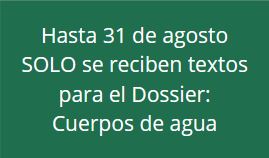Efectos de Bacillus spp. en organismos no diana del ecosistema terrestre
DOI:
https://doi.org/10.18800/kawsaypacha.202401.A008Palabras clave:
Toxicología, Bioproducto, Eisenia fetida, Plantas terrestresResumen
El aumento de la población mundial trae consigo la necesidad de incrementar la producción de alimentos y por ende la búsqueda de alternativas tecnológicas para satisfacer dicha demanda. Según la Organización de las Naciones Unidas para la Alimentación y la Agricultura (FAO), se hace necesario evaluar tanto la efectividad como la seguridad de todos los productos utilizados en la agricultura. El Instituto de Biotecnología de la Plantas, de la provincia de Villa Clara, Cuba, inmerso en la solución de esta problemática, ha demostrado que dos biopreparados, CCIBP-C5 (Bacillus pumilus) y CCIBP-A5 (Bacillus amyloliquefaciens), presentan efecto en el crecimiento de plantas y actividad frente a hongos fitopatógenos. Sin embargo, no existen evidencias de su seguridad sobre organismos no diana en el ecosistema. La ecotoxicología terrestre es la rama de la ciencia destinada a predecir dicho impacto sobre organismos representativos. Se realizaron cuatro ensayos para evaluar la toxicidad aguda de las especies de Bacillus a concentraciones de 108 UFC.g-1 de suelo, según las normativas de la Agencia de Protección Ambiental de los Estados Unidos (EPA, según siglas en inglés) en los biomodelos de Eisenia fetida y diferentes especies de plantas terrestres. La mortalidad/inhibición de la germinación, peso, vigor vegetativo y otros hallazgos clínicos fueron investigados durante 30 días. En ninguno de los biomodelos se presentó mortalidad y los efectos observados no mostraron diferencias estadísticas significativas con el grupo control correspondiente. Podemos concluir que los biopreparados CCIBP-C5 y CCIBP-A5 no son tóxicos para las especies estudiadas del ecosistema terrestre.















